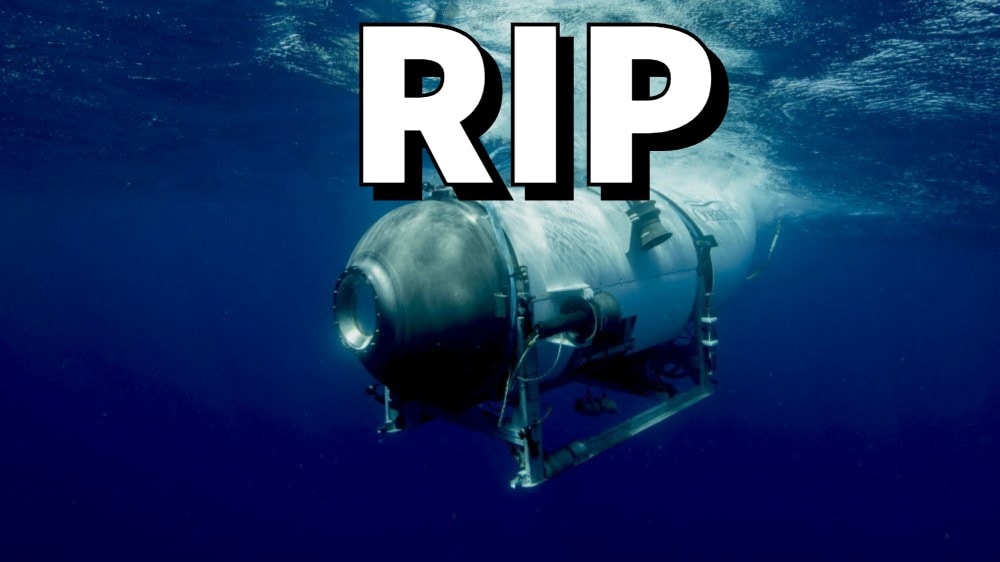Analysis Of Sound Recordings: Unraveling The Titan Sub's Implosion

Table of Contents
The Role of Hydrophones in Detecting the Implosion
Hydrophones are the underwater equivalent of microphones, crucial tools for underwater acoustic monitoring. They are highly sensitive devices capable of detecting even faint underwater sounds. In the search for the missing Titan submersible, a network of hydrophones was strategically deployed across the search area, acting as underwater "ears" to listen for any sign of the vessel. The sensitivity and strategic placement of these hydrophones were vital in detecting the faint but crucial sound of the implosion.
- Types of hydrophones used: Both bottom-mounted hydrophones, anchored to the seabed, and towed arrays, dragged behind research vessels, were likely employed to cover a larger area and improve detection capabilities.
- Frequency ranges: The implosion likely generated a broad range of frequencies, but high-frequency components would have been particularly crucial for precise location and characterization.
- Challenges in detection: The vastness of the ocean, background noise from marine life and ocean currents, and the potential for sound wave attenuation (weakening) all presented significant challenges in detecting and accurately locating the sound source.
Characteristics of the Implosion Sound Signature
The acoustic signature of an implosion is unique. Unlike the gradual creaking or groaning of a vessel under stress, an implosion is characterized by an extremely rapid and violent release of pressure. This translates to a distinctive sound profile vastly different from other underwater noises.
- High-frequency components: The instantaneous pressure change during an implosion produces a distinct burst of high-frequency sound energy.
- Sound signal duration: The duration of the implosion sound is typically very short, lasting only milliseconds.
- Intensity and propagation: The intensity of the sound would have been substantial close to the implosion, decreasing with distance due to sound wave spreading and absorption by the water column.
Data Analysis and Interpretation Techniques
Analyzing the recorded hydrophone data involved sophisticated signal processing techniques to isolate the crucial implosion signal from the ever-present background noise of the ocean environment. This involved multiple steps and highly specialized skills.
- Signal filtering and enhancement: Techniques like bandpass filtering were used to isolate the frequency range of interest while suppressing irrelevant noise.
- Time-frequency analysis: Spectrograms, visual representations of sound frequencies over time, played a vital role in analyzing the characteristics of the detected sound.
- Source localization algorithms: Sophisticated algorithms were employed to pinpoint the precise location of the implosion sound source based on the arrival times of the sound at different hydrophones. This utilizes the time difference of arrival (TDOA) principle. Acoustic modeling further aided in verifying these locations.
Corroborating Evidence and Investigative Conclusions
The acoustic data from the hydrophone recordings provided crucial evidence which aligned with other aspects of the investigation. This corroboration strengthened the conclusions drawn about the cause of the implosion.
- Timing of the implosion: The precise timing of the implosion signal, as captured by the hydrophones, was vital in correlating the event with the last known communications from the submersible.
- Location of the implosion: Sound propagation models, utilizing the detected sound, helped pinpoint the implosion location, consistent with the later discovery of debris.
- Implications for future safety: The findings underscored the need for enhanced safety protocols in deep-sea submersible operations, including improved hull design and real-time monitoring systems.
Conclusion: Understanding the Titan Sub's Implosion Through Sound Recording Analysis
The analysis of sound recordings played a pivotal role in unraveling the circumstances surrounding the Titan submersible implosion. Through the deployment of hydrophones, the capture of the characteristic implosion sound, and the application of sophisticated data analysis techniques, investigators were able to pinpoint the location and timing of the catastrophic event. This detailed analysis provided crucial evidence that supported other investigatory findings and highlighted the critical importance of robust safety protocols and technological advancements in deep-sea exploration. Want to delve deeper into the fascinating world of underwater sound analysis and its role in disaster investigation? Explore related articles and resources here… (link to related articles)

Featured Posts
-
 Delaware Governors Warning Identifying And Confronting Fascism In A Post Trump Era
May 26, 2025
Delaware Governors Warning Identifying And Confronting Fascism In A Post Trump Era
May 26, 2025 -
 L Affaire Baffie Ardisson Sexisme A La Tele Et Defense Controversee
May 26, 2025
L Affaire Baffie Ardisson Sexisme A La Tele Et Defense Controversee
May 26, 2025 -
 Tonton Balapan Moto Gp Argentina 2025 Secara Live Streaming Dini Hari
May 26, 2025
Tonton Balapan Moto Gp Argentina 2025 Secara Live Streaming Dini Hari
May 26, 2025 -
 Queen Wens Parisian Court A Retrospective
May 26, 2025
Queen Wens Parisian Court A Retrospective
May 26, 2025 -
 La Lutte Contre Le Piratage Iptv Rtbf Et Rtl Belgium Unissent Leurs Forces
May 26, 2025
La Lutte Contre Le Piratage Iptv Rtbf Et Rtl Belgium Unissent Leurs Forces
May 26, 2025
